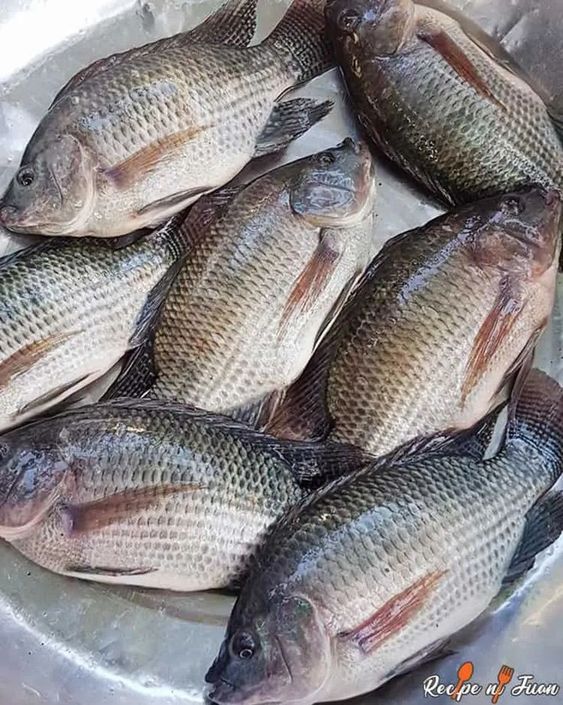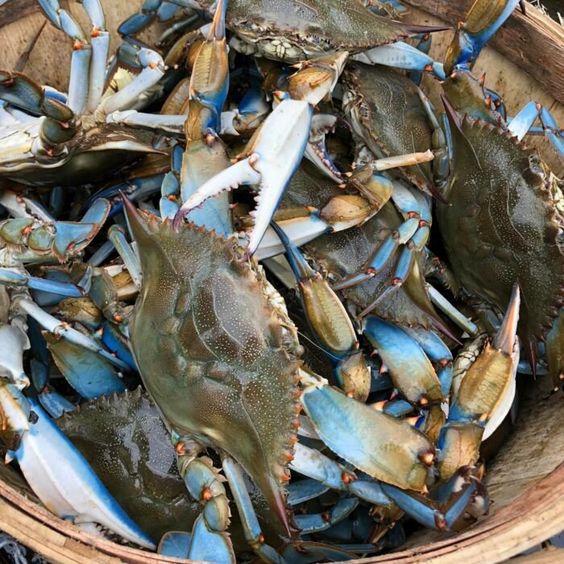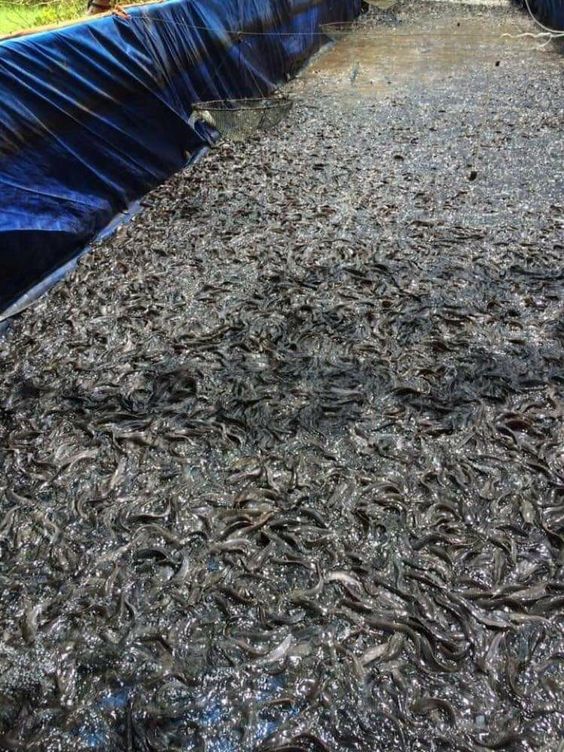Technical Aspects of Gourami Cultivation: A Comprehensive Guide
Benefits of Gourami Cultivation
- High Demand: Gourami are a popular food fish, particularly in Asia and Africa. Their mild flavor and versatility in cooking make them a desirable protein source.
- Relatively Fast Growth: Gourami exhibit good growth rates under optimal conditions, allowing for quicker harvest cycles compared to some fish species.
- Low Oxygen Requirements: Labyrinth organs allow gourami to breathe atmospheric oxygen, making them suitable for cultivation in ponds with lower oxygen levels.
- Herbivorous or Omnivorous: Many gourami species are herbivores or omnivores, allowing for a wider range of feeding options and potentially lower feed costs.
- Relatively Disease Resistant: Gourami generally have good resistance to diseases compared to some other freshwater fish.
Goals of Gourami Cultivation
- Maximize Production: The primary goal is to achieve optimal growth rates and high yields of healthy gourami for market.
- Maintain Water Quality: Creating and maintaining a stable and healthy aquatic environment is crucial for gourami health and survival.
- Minimize Disease Outbreaks: Implementing proper biosecurity measures helps prevent disease outbreaks that can devastate fish populations.
- Optimize Feed Management: Providing a balanced and cost-effective diet ensures healthy growth while minimizing feed waste.
- Ensure Profitability: Gourami cultivation should be profitable, balancing production costs with market prices for a sustainable business.
Technical Considerations for Technical Aspects of Gourami Cultivation
Species Selection:
Choosing the right gourami species depends on several factors, including:
- Market Demand: Research local market preferences for gourami species and sizes.
- Climate and Water Conditions: Consider the species’ tolerance for temperature, pH, and water hardness in your region.
- Pond Management: Some species may require specific pond setups (e.g., breeding tanks for egg-laying gourami).
- Growth Rate and Size: Species like Giant Gourami grow large, requiring more space and resources, while Pearl Gourami remain smaller and mature faster.
Pond Preparation Technical Aspects of Gourami:
- Location and Size: Choose a suitable location with access to water and proper drainage. Pond size depends on the chosen species, stocking density, and production goals.
- Water Source: Ensure a reliable source of clean water with suitable temperature and pH for the chosen gourami species.
- Pond Construction: Ponds can be made of earth, concrete, or liners. Proper construction ensures water retention and prevents leaks.
- Water Quality Management: Implement systems for aeration (to maintain oxygen levels), filtration (to remove waste products), and water quality monitoring (to track pH, ammonia, nitrite, and nitrate levels).
Broodstock Management Technical Aspects of Gourami:
- Selection: Healthy, mature gourami are chosen for breeding. Consider factors like size, body shape, and absence of deformities.
- Sexing: Distinguishing male and female gourami can be challenging for some species. Consulting experienced breeders or using reliable sexing techniques is recommended.
- Breeding Tanks: Separate breeding tanks or designated breeding areas within ponds are essential for controlled spawning.
- Spawning Conditions: Mimic natural spawning triggers like water fluctuations, temperature changes, and introduction of aquatic plants.
Hatchery and Fry Management Technical Aspects of Gourami:
- Egg Collection and Hatching: Techniques vary depending on the species. Some gourami are bubble-nest builders, while others scatter eggs. Hatchery setups should maintain optimal water conditions for egg development and fry survival.
- Fry Rearing: Newly hatched fry are delicate and require specific care. Provide high-quality infusoria (microscopic organisms) or specialized fry food for initial feeding. Maintain water quality and adjust feeding regimes as fry grow.
Stocking and Grow-Out Technical Aspects of Gourami:
- Stocking Density: Overcrowding can stress fish, hinder growth, and increase disease risk. Maintain recommended stocking densities based on pond size, water quality, and chosen gourami species.
- Feeding Management: Develop a feeding plan based on the nutritional needs of the growing fish. Formulated feeds or a combination of feed types (pellets, algae, vegetables) can be used. Regular feeding schedules and monitoring are crucial.
- Growth Monitoring: Regularly monitor fish growth through sampling techniques.
Health Management Technical Aspects of Gourami:
- Water Quality Maintenance: Consistent monitoring and maintenance of water quality is the cornerstone of gourami health. Regular water changes, aeration, and biofiltration are essential.
- Disease Prevention: Implementing biosecurity measures like disinfecting equipment, quarantining new fish, and avoiding overcrowding helps prevent outbreaks.
- Disease Identification and Treatment: Early detection of diseases is crucial. Familiarize yourself with common gourami diseases and have a plan for treatment using approved medications.
Harvesting and Marketing Technical Aspects of Gourami:
- Harvesting Methods: Harvesting techniques depend on pond size, fish size, and market requirements. Seining nets, traps, and graded size harvesting are common methods.
- Grading and Sorting: Fish are sorted according to size and quality to meet market demands.
- Transportation: Live fish transport requires specialized containers with adequate oxygenation and temperature control. Short transportation times are preferable.
- Marketing Channels: Selling gourami directly to consumers, restaurants, or wholesalers depends on market access and production scale. Building relationships with reliable buyers is crucial.
Sustainability Considerations:
- Responsible Water Management: Minimize water usage and pollution through efficient pond management and responsible waste disposal.
- Feed Management: Use high-quality, sustainable feed sources to minimize environmental impact.
- Disease Prevention: Focus on preventative measures to minimize reliance on antibiotics and other treatments.
- Biodiversity: Consider integrating aquatic plants or creating refuges for beneficial organisms to promote a healthy pond ecosystem.
Opinions and Ideas on Technical Aspects of Gourami Cultivation
- Integration with Aquaponics: Combining gourami cultivation with plant production in an aquaponic system can be a sustainable approach, utilizing fish waste as nutrients for plants.
- Biofloc Technology: Utilizing biofloc technology, which encourages the growth of beneficial microorganisms in the pond, can improve water quality and potentially reduce dependence on external filtration systems.
- Genetic Improvement: Selective breeding programs can potentially improve growth rates, disease resistance, and other desirable traits in gourami.
- Value-Added Products: Exploring value-added products like smoked gourami or processed gourami dishes can increase profitability.
Suggestions and Best Practices Technical Aspects of Gourami
- Seek Expert Advice: Consulting experienced gourami farmers, aquaculture extension agents, or fish health professionals can be invaluable for beginners.
- Develop a Business Plan: Consider factors like production goals, market analysis, financial projections, and regulatory requirements before starting a gourami farm.
- Maintain Records: Keeping detailed records of pond management practices, feeding regimes, growth data, and health events helps track progress and identify areas for improvement.
- Stay Updated: Continuously learn about new technologies, best practices, and emerging challenges in gourami cultivation through research and industry publications.
Conclusion Technical Aspects of Gourami cultivation presents a viable and potentially profitable agricultural venture. By carefully considering the technical aspects outlined above, from species selection to post-harvest practices, aspiring gourami farmers can establish a successful and sustainable operation. Remember, responsible pond management, a focus on biosecurity, and continuous learning are key factors in ensuring the health and well-being of your gourami and the overall success of your farm.






